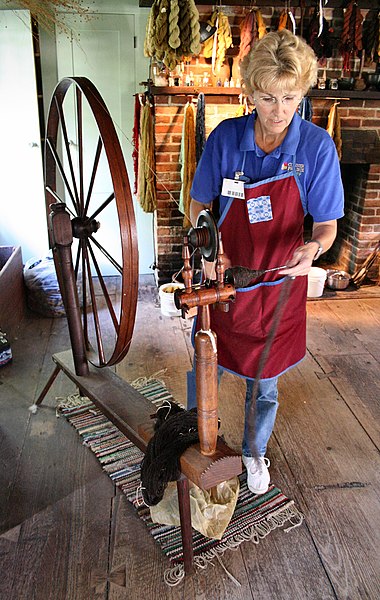 |
| Fulling Mill |
In the beginning of the American Colonies, all cloth was imported from England. England already had a thriving textile industry by the mid-1600s. Some estimates are that 65% of the English economy was derived from its textiles.
Although the importation of sheep was prohibited - to protect England's textile monopoly - resourceful colonists smuggled them. The hard-working Puritans were producing their own cloth almost as soon as they arrived.
Spinning and weaving is only part of the process of making cloth. Another important step in the process is called "fulling." Cloth straight off the loom is loose and sloppy. The fulling process washed out all the dirt and lanolin, then beat the fabric with wooden mallets (powered by a water wheel) until it shrunk and tightened into a usable bolt of cloth.
 |
| Wooden Mallets inside the Fulling Mill |
After the cloth was pounded, it was brushed with a teasel head. Teasels are a dried flower head with hook-tipped spines that when brushed across wool fabric, will raise the nap of the fabric. The nap was then cut off with long, narrow shears. Next, the cloth was stretched over a long frame to dry.
Before fulling mills, this process was done by hand, or rather by feet. Stomping on the wet, soapy cloth took hours of labor to produce what the fulling mill could do in half the time with better results.By the time King William III issued the Wool Act in 1699, our colonial ancestors were already providing cloth for themselves and were exporting the excess to other colonies and ports.

PeggThomas.com





